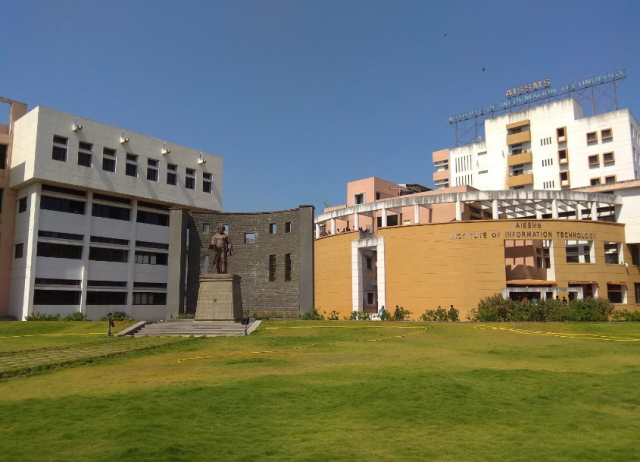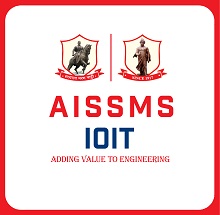Sai Vidya Institute of Technology (SVIT) in Bangalore has established itself as a notable player in technical education, particularly through its evolving placement ecosystem. While maintaining a balanced approach between academic rigour and industry readiness, the institution demonstrates varying placement outcomes across disciplines – a reflection of both market demands and student preparedness. Below is the detailed placement data across key engineering streams and management programs:
- Sai Vidya Institute of Technology Placement Overview
- Sai Vidya Institute of Technology Placement Trends
- Sai Vidya Institute of Technology Institutional Support Mechanisms
- Sai Vidya Institute of Technology Student-Led Initiatives
- Sai Vidya Institute of Technology: Regional and National Context
- Sai Vidya Institute of Technology Strategic Recommendations for Aspirants
Sai Vidya Institute of Technology Placement Overview
| Branch/Course | Avg Package (LPA) | Highest Package (LPA) | % Placed / No. Placed | College Avg Placement (LPA) | Additional Info | Student Review on Placement Data |
| BE Computer Science and Engineering | 4-6 | 12-15 | 70-80% | 5.5 | Top recruiters: Infosys, Wipro, TCS | CSE students get better placements compared to other branches |
| BE Information Science and Engineering | 3.5-5 | 10-12 | 65-75% | 4.8 | Regular campus drives by mid-sized IT firms | Placements improved after 3rd year internships |
| BE Computer Science | 5-7 | 14-16 | 75-85% | 6.2 | Emerging specialization with niche recruiters | New course but good industry response |
| BE Computer Science | 4.5-6.5 | 12-14 | 70-80% | 5.8 | Data analyst roles in product companies | Requires self-study beyond syllabus |
| BE Electronics & Communication Engineering | 3-4.5 | 8-10 | 60-70% | 4.1 | Core companies visit occasionally | Most ECE students opt for higher studies |
| BE Mechanical Engineering | 2.5-4 | 6-8 | 50-60% | 3.5 | Limited core mechanical roles available | Need to attend off-campus drives |
| BE Civil Engineering | 2.5-3.5 | 5-7 | 40-50% | 3.2 | Infrastructure companies recruit seasonally | Placements depend on market conditions |
| MBA | 4-5.5 | 9-11 | 60-65% | 4.7 | Focus on retail and operations management | Average placements for management graduates |
Sai Vidya Institute of Technology Placement Trends
- Computer Science Performance: Sai Vidya Institute of Technology’s computer science programs, including traditional CSE and specialised tracks, consistently achieve the highest placement rates and salary packages. Emerging fields such as AI, ML, and Data Science show an average package of 6.2 LPA, reflecting strong industry demand for niche skills. While the curriculum provides a solid foundation, students report that proactive learning through certifications and hands-on projects greatly enhances employability.
- Core Engineering Challenges: Programs in Electronics, Mechanical, and Civil Engineering face comparatively tougher placement scenarios, with 40–70% placement rates. Limited core sector recruitment often leads ECE and Mechanical graduates toward IT roles or further studies. Civil Engineering placements are particularly sensitive to infrastructure project cycles. The institute supports participation in off-campus drives, but many students supplement this with GATE exam preparation to pursue opportunities in the public sector.
- Management Program: The MBA program at SVIT reports an average package of 4.7 LPA, primarily focusing on operational and retail management roles. Although placement rates are lower than in engineering streams, the program benefits from consistent recruitment within India’s growing organised retail and service sectors.
Sai Vidya Institute of Technology Institutional Support Mechanisms
SVIT’s placement strategy emphasises sustained corporate engagement through:
- Technical conclaves: Annual events like TechVidya bring industry leaders for workshops and hackathons
- Live project pipelines: Semester-long collaborations with companies in IoT, embedded systems, and supply chain management
- Dedicated placement training: 200-hour soft skills program starting from the second year, including GD practice and mock interviews
Infrastructure Enablement
- Smart classrooms: For virtual recruitment drives and online technical tests
- Incubation center: Hosts student startups in renewable energy and agritech, creating alternative career pathways
- Dedicated placement portal: With real-time updates on drive schedules and company profiles
Sai Vidya Institute of Technology Student-Led Initiatives
- Peer learning groups: Focused on competitive coding and certification courses (AWS, Azure, CCNA)
- Alumni mentorship: Virtual sessions with graduates at companies like Cisco and Bosch
- Technical clubs: Robotics club and code labs that build proof-of-concept projects for resumes
Sai Vidya Institute of Technology: Regional and National Context
While SVIT’s placement metrics align with Karnataka’s technical education averages, certain trends stand out:
- IT/CS premium: The 15 LPA ceiling for CSE mirrors Bangalore’s startup ecosystem demands.
- Core sector gaps: Mechanical engineering placements trail national institutes but show improvement through automotive sector tie-ups.
- Emerging domains: Renewable energy and EV technology roles begin appearing in placement brochures.
The institute’s focus on Learn to Lead manifests through placement training modules that emphasise leadership case studies from Indian tech giants. This approach resonates with recruiters seeking team-ready graduates beyond technical proficiency.
Sai Vidya Institute of Technology Strategic Recommendations for Aspirants
- Branch selection: Computer science streams offer 2–3% higher placement likelihood than civil/mechanical
- Skill diversification: Students in lower-demand branches benefit from minor specialisations in data science or automation
- Geographic flexibility: Willingness to relocate increases opportunities in manufacturing hubs like Pune or automotive clusters in Tamil Nadu SVIT’s placement ecosystem continues to evolve, balancing Bangalore’s tech boom with India’s broader engineering education challenges. While not immune to market fluctuations, the institute demonstrates systematic efforts to bridge classroom learning and workplace requirements, a critical differentiator in India’s crowded technical education landscape.








